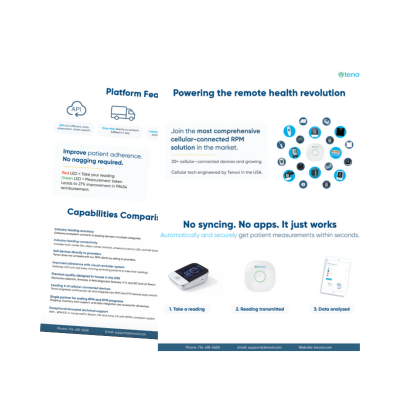Rural telehealth care and remote patient monitoring (RPM) addresses access and quality healthcare barriers for individuals living in remote or underserved communities. One notable example is a teleoncology program study, where 95% of the patients alternating between in-person and virtual visits found virtual care effective or superior. This article explores the advancing role of remote patient monitoring and rural telehealth, drawing on insights from recent studies and advancements.
Rural Telehealth: Advancing Equitable Healthcare Access
Telemedicine, particularly through RPM, redefines rural healthcare by addressing access, affordability, and quality barriers. Implementing RPM in rural and urban hospitals often hinges on socioeconomic factors. A recent study analyzing data from over 4,200 hospitals revealed that rural hospitals near lower socioeconomic households were 33.5% less likely to adopt RPM for chronic care management than those near higher socioeconomic groups.
Similarly, urban hospitals in economically disadvantaged areas were 41.9% less likely to implement RPM. These findings underscore the need for state and federal policies prioritizing equitable access to RPM services. By addressing socioeconomic disparities, healthcare providers can ensure that RPM’s benefits are accessible to all patients, regardless of their economic status.
Innovations in Rural Telehealth During COVID-19 Pandemic
The COVID-19 pandemic accelerated the adoption of telehealth, particularly in rural communities. However, many rural hospitals faced challenges, including staff shortages, operational limitations, and the need for coordinated health services. Adventist Health Saint Helena Hospital, a rural facility in northern California, demonstrated how telehealth could be effectively leveraged to address these issues. Serving a predominantly rural and Latino population, the hospital expanded its digital health services and deployed mobile health centers for testing and vaccinations.
It converted a mobile health van into a COVID-19 vaccination platform. These initiatives provided equitable access to care for underserved populations, including those with limited digital access and language barriers. This case study highlights the importance of community partnerships and innovative telehealth solutions in addressing barriers and ensuring health equity during crises.
Advancing Rural Veteran Healthcare Through RPM
The Veterans Health Administration (VHA) has pioneered in leveraging telehealth to address rural patients’ needs. A comprehensive study of VHA records from 2012 to 2017 examined healthcare utilization and outcomes for rural veterans with chronic heart failure. Key findings include:
- Rural patients accessed VHA facilities at similar or higher rates than urban counterparts for primary care and telehealth services.
- A decline in inpatient and urgent care use among rural patients indicated improved health management facilitated by telehealth.
- No significant differences in mortality or treatment receipt were observed between rural and urban patients.
These results demonstrate that VHA’s telehealth and RPM programs effectively bridge access gaps, ensuring high-quality care for rural veterans.
Understanding Rural Telehealth
Emerging innovations like Emergency Medical Services (EMS) telemedicine are poised to enhance rural healthcare further. By enabling paramedics to collaborate virtually with medical experts during emergencies, EMS telemedicine ensures informed decision-making and timely interventions in critical situations. This technology addresses immediate medical needs and complements broader rural telehealth initiatives, creating a more comprehensive and responsive healthcare framework.
As telehealth continues to evolve, the focus must remain on expanding infrastructure, fostering community partnerships, and addressing digital literacy gaps. These efforts will ensure that rural telehealth and RPM achieve their full potential, delivering equitable, high-quality care to underserved populations.


